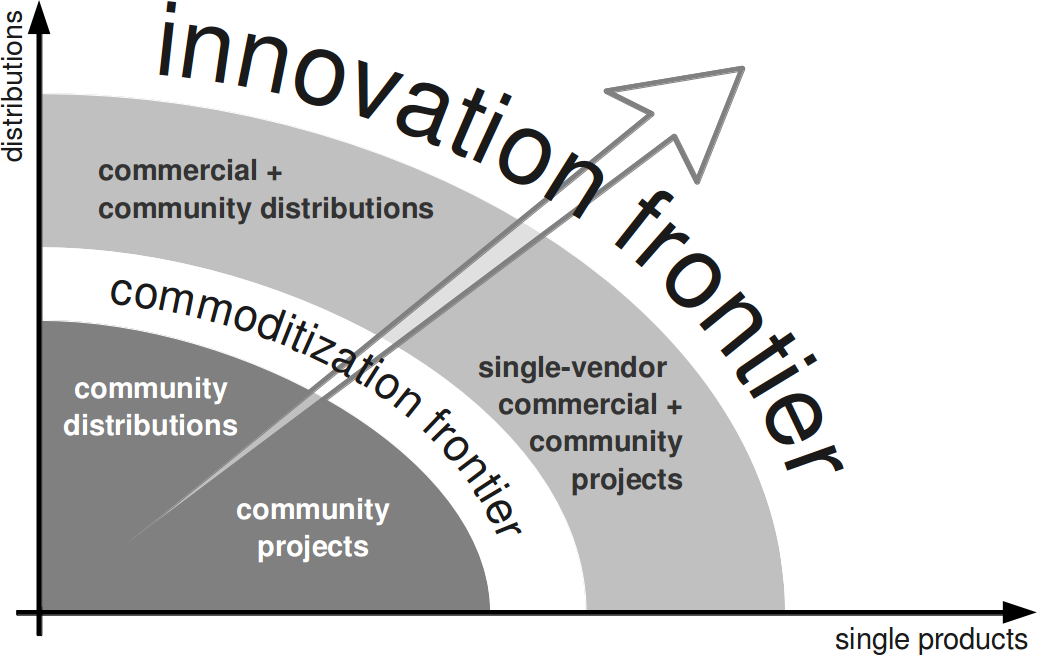Following up on Matt Aslett’s excellent post about the growth of permissive licenses and a short discussion about it on my research group’s blog, I wanted to suggest here a thought about the ratio of new vendor-owned vs. community-owned open source projects. I’m ignoring existing projects because of their path dependence (read: only today do we know what we are doing). My point is being illustrated by the following figure that I occasionally use:

This figure shows my speculation that software innovation is being driven forward by both single-vendor and community-owned open source projects, but that software commoditization is solely driven forward by community-owned projects. Single-vendor innovation takes place because there is money to be made, and community-owned innovation takes place where initial fun meets eventual business (or other) needs. Ultimately, all single-vendor innovation will be commoditized through a community-owned project. Today’s single-vendor SugarCRM is tomorrow’s community-owned CiviCRM.
Thus, for every once-new single-vendor open source project there will be an eventually-new community project, in addition to the originally-new community projects. The ratio may play out to be something like one single-vendor for two community-owned projects, though I think the total number of new community-owned projects is likely to be much higher. So the ratio of successful single-vendor / community-owned projects may well be stabilizing in the 1-10% range. (Please note that I’m just guessing; also, I’m excluding small random ultimately not successful hobby projects here.)
Going back to the original discussion about licenses, I’m assuming that new projects will chose a strongly reciprocal license if they are vendor-owned and a permissive license if they are community-owned. Community projects that don’t choose a permissive license are at a Darwinian disadvantage over those that do because the later can receive contributions from a broader set of enterprises than the former. This will translate into the reciprocal / permissive license ratio of about the same 1-10% range I just suggested above.









Leave a Reply